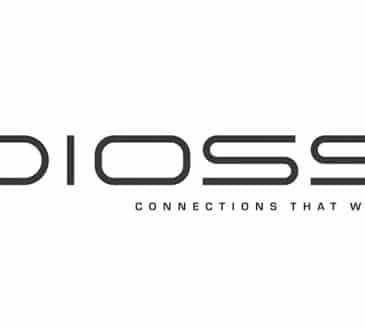Cultivating contrarian thinking in corporate strategy

Last week I had one of the most fulfilling episodes of my consulting career: A two-day immersive workshop with a Fortune 500 insurer designed to stress-test their corporate strategy. While specifics are private, I’d like to share a few thoughts this experience inspired.
Corporate strategy is commonly understood as the goals and objectives an organization sets for itself. It is formulated in terms of key performance indicators, such as growth, profitability, market share, etc. However, in complex industries the drivers of performance can be elusive, as they can be both within and outside the organization’s control.
I contend that corporate strategy is fundamentally a manifestation of beliefs; the foundational premises or hypotheses that the firm believes to be true about its industry, its market, its customers, and itself. The goals and objectives are their response to such beliefs.
It would be great if the formation of this belief system were entirely objective; meaning, it corresponds to reality and self-corrects when it doesn’t. As we have all experienced, this is far from being the case. There are plenty of mistaken or arbitrary propositions that go unchallenged, distorting the belief system. Hence, challenging and stress testing this belief system is crucial for an organization.
Challenging the implicit beliefs in corporate strategy is crucial for an organization.
There are several factors that distort corporate beliefs. In this post I’d like to discuss two of them:
- Inertia
In corporate life, nothing has more weight than the way things have been done. This tendency is rooted in a very basic and sound reason: the status quo has kept the corporation alive at worst or thriving at best. “Rocking the boat” can destabilize the company and lead to its demise. Thus, the natural tendency is to respect the status quo.We need not recall the companies that suffered because they couldn’t depart from their status quo. Kodak, IBM, Xerox, GE, and other leading companies couldn’t overcome their inertia and faced dire consequences.A common antidote for corporate inertia is leadership change. An outsider introduces a shock to the system that allows the firm to break from its past. This may or may not ultimately work, but the effect certainly doesn’t last. Why? Because inertia eventually reemerges. The new way of doing things becomes the status quo and gets entrenched in the organization.
- Authority
Hard power endows trust. In a corporate hierarchy, the implicit assumption is that a manager or a leader, by virtue of her position, knows what she is talking about. Her views and decisions are informed by this presumed knowledge and subordinates rarely question or contradict the leader.It is not hard to see how this distorts beliefs. On one hand, the leader must convey certainty and conviction to move the organization forward; while on the other hand, she deals with such complex and abstract issues that it is practically impossible to learn facts first-hand. The leader thus relies on knowledge systems from within and outside the organization. The problem is that -due to political and economic incentives- both internal and external knowledge systems are prone to amplifying the leader’s views and reinforcing the mainstream. Leaders act on this knowledge base, which further augments the beliefs.To make things worse, these two factors compound each other: Inertia is empowered by authority and authority reinforces itself with inertia. Since constantly changing leaders is not a viable strategy, it is critical for corporations to short-circuit this process.
Corporations must seek and reward contrarian views. Leaders must actively challenge the organization’s core beliefs and signal they are willing to change course.
This is easier said than done, but not impossible. In our strategy workshop we used gamification and friendly rivalry to encourage dissent and creative challenge of core assumptions. I was marveled by the ingenuity of the ideas put forth once we introduced incentives for contrarian thought.
Outside of workshops, there are other tactics executives can deploy to continuously challenge implicit beliefs, such as:
- Premortems: assume the current strategy unequivocally fails. Trace back all the possible reasons why the strategy failed by imagining the thesis of a short seller. Then assess their likelihood and develop a plan to tackle the top ones.
- Invert dogmas: identify the notions that everyone takes for granted in the company and industry. Then pretend the most respectable expert in the field claims the opposite is true. Try to see what had to be true for her to take that position and entertain it seriously.
- Find the empty lanes: seek those markets, products, or deals nobody is paying attention to. Acknowledge that, in empty lanes, your negotiating power is high. A well-crafted strategy may lead to returns that substantially surpass the mainstream alternative that is crowded by competition and constant attention.
High ROI initiatives hide in plain sight unless the status quo is openly challenged. Embracing contrarian thinking can help corporations realize uncomfortable truths and uncover hidden opportunities.
Written by Francisco Orduña.
Have you read?
How JC White, Founder & CEO of T3 Body, Founded a Business Empire Focused on Fitness for Entrepreneurs.
Why Leadership Needs to Start Stepping Out of Comfort Zones Again by Gloria St. Martin-Lowry.
Economic Profit as the Ultimate Performance Measure by Gregory V. Milano.
Ode to Joy by Leo Bottary.
Why Your Company’s Health Depends On Your Personal Health by Dr. Erik Reis.
Add CEOWORLD magazine to your Google News feed.
Follow CEOWORLD magazine headlines on: Google News, LinkedIn, Twitter, and Facebook.
Copyright 2024 The CEOWORLD magazine. All rights reserved. This material (and any extract from it) must not be copied, redistributed or placed on any website, without CEOWORLD magazine' prior written consent. For media queries, please contact: info@ceoworld.biz








